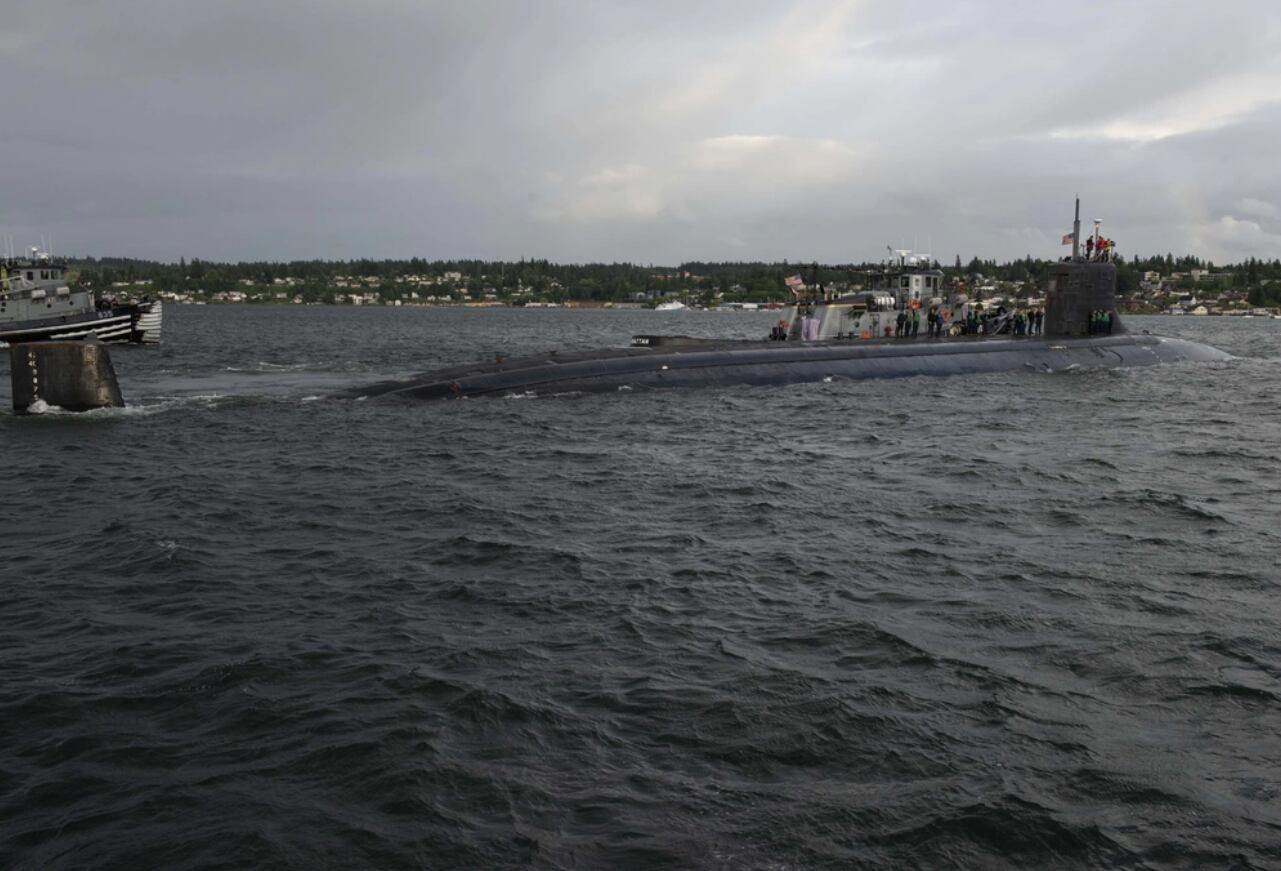Since the Navy revealed this week that the fast-attack submarine Connecticut struck an undersea mountain in early October while operating in the South China Sea, one question springs to mind: how could this happen?
How could a $3 billion Seawolf-class boat, considered one of the Navy’s most formidable and advanced, crash into an undersea landmass?
While the Navy has yet to explain how the mishap occurred, former submariners and regional experts told Navy Times that navigating a sub while remaining undetected is a challenge on any day.
“You don’t have any windows, you can’t see outside,” Bryan Clark, who spent 25 years as a U.S. submariner, told Navy Times. “You’re driving around in the dark without having a really good picture of what’s going on in front of you.”
Throw in the South China Sea’s shallow depths and a rugged topography that includes canyons and mountain ranges, and the Connecticut’s mission at the time of the Oct. 2 collision was likely even more difficult, experts say.
RELATED

The Navy has yet to explain what sort of damage the secretive sub sustained, but it was enough to force the ship to surface and limp back to Guam for repairs.
Exactly what Connecticut was up to in the contentious South China Sea at the time of the mishap also remains unclear, although officials have said the boat was operating in international waters.
The Japan-based U.S. 7th Fleet said in a statement last week that it is determining whether anyone will face disciplinary action for the mishap.
If the sub was trying to stay undetected at the time and relying on so-called “passive” sonar to listen for ships, marine life or other obstacles, it would have given up some environmental awareness in the process, said Clark, who now heads the Hudson Institute’s Center for Defense Concepts and Technology.
“You don’t want to reveal your location unless you have to,” Clark said. “It gives you a very constrained area to operate in.”
Such subs have active sonar that can further help the crew know what’s in the water with them, but using that asset costs them stealth, he said.
In other environments, like the Arctic, subs will often run their active sonar because the risk of hitting ice keels — the submerged part of an ice ridge — outweighs staying undetected, Clark said.
RELATED

Passive sonar relies on potential obstacles making sounds, which is not the case with a seamount.
“You can only find things around you or in front of you in you can hear them,” he said. “Seamounts are a persistent challenge for submarines, and it takes careful planning and execution to avoid running into one.”
While the South China Sea has become a disputed flashpoint for Washington and Beijing, it is also marked by a challenging subsurface terrain and general shallowness, according to Greg Poling, who heads the Southeast Asia Program and Asia Maritime Transparency Initiative at the Center for Strategic and International Studies.
Certain portions of the sea have been labeled dangerous grounds on maps for centuries, Poling said.
“It’s a shallow area of sea…with relatively few passable sea lanes, and until pretty modern times, it was very poorly surveyed,” Poling said.
Some of the sea is only 500-feet or 600-feet deep, Clark added, so subs have to ride a depth band that keeps them safely above the seafloor but far enough from the surface to avoid detection.
“You can’t operate too deep and still be far enough from the seafloor to avoid running into an uncharted seamount,” he said. “You have to depend on your charts being accurate, and you have to leave enough room between you and the bottom to ensure that, if there is an uncharted object or seamount, you’ll be above it.”
Such mishaps rarely occur because the sub community carefully plans such operations, Clark noted.
But the U.S. Navy’s undersea charts for the South China Sea are likely not as good as those for friendlier waters, he said.
RELATED

Clark suspects the Connecticut mishap was more a function of difficult terrain than a readiness issue.
“This incident is in an area where you’d be doing intense operations,” he said. “I have to assume that this was all thought through, and it just ends up being a low probability event.”
Still, questions remain.
“Was this just a planned operation that came up, that the dice rolled the wrong way because we took a calculated risk to get the job done…or was this the result of a mistake on the part of the crew?” Clark said.
At this point, the retired submariner said he didn’t think the Connecticut’s accident bore much similarity to the 2005 mishap involving the submarine San Francisco, which crashed into a seamount while underway nearly 400 miles southeast of Guam.
“It would seem like there would have been a lot of planning in place to support (Connecticut’s) operation, whereas the San Francisco was just transiting from one place to another and not being prudent enough to stay away from the bottom and avoid seamounts,” Clark said.
Geoff is the managing editor of Military Times, but he still loves writing stories. He covered Iraq and Afghanistan extensively and was a reporter at the Chicago Tribune. He welcomes any and all kinds of tips at geoffz@militarytimes.com.




